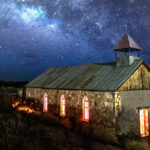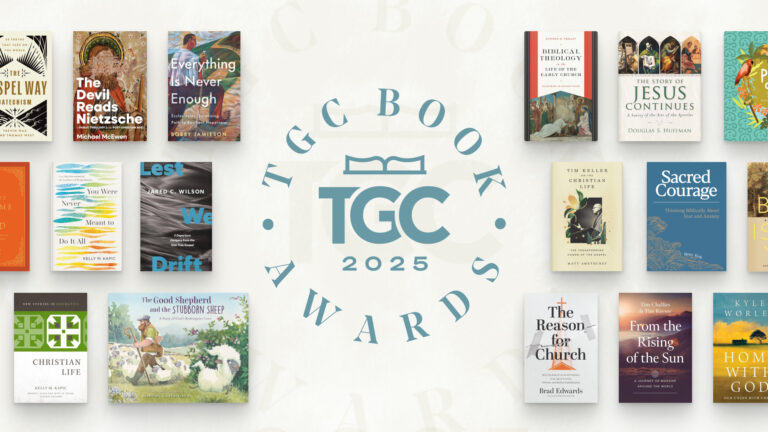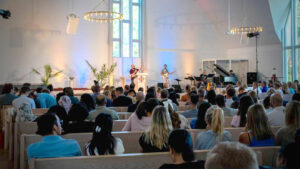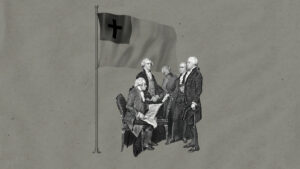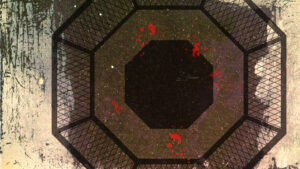Godzilla, King of the Monsters. Born from the fallout of the Bomb, the original incarnation stood as the grotesque apotheosis of the atomic power we’d unleashed in the Second World War. Reflecting the atomic age’s ambivalence about our destructive capabilities, the now-iconic figure would appear in multiple roles across the 20-something movies that were made after Ishiro Honda’s original 1954 film. Appearing as an unmitigated villain in one, the leviathan would play savior against the threat of worse monsters in another, and lesser of two evils in the next. Beyond being fun monster flicks, the movies drawing on the Godzilla mythos represent various answers to the question, “What hath man wrought?”
Reframing the question, Gareth Edwards’s new Godzilla film recasts the monster as a part of the natural order. Godzilla and the behemoths he fights are ancient beasts from another, wilder, primordial age. They stand as beings beyond our ken and our grasp. We could not create something of this magnitude and it is folly to think we could control them. They are Other. Indeed, as Ken Watanabe’s scientist character Serizawa says in what stands as the thesis line for the whole film, “The arrogance of man is thinking nature is under our control.”
Now, before anybody gets the impression that Godzilla is either masterful, or pretentious, it’s not. Edwards knows he’s making a summer monster movie and does a bang-up job of it: huge, improbable monster fights, the destruction of cityscapes, and cinematic havoc. Still, sitting there in the theater, beholding the devastation, it’s impossible not to let Edwards’s reframing of the question recast the destruction in a theological light.
You see, just like the God of Israel, Godzilla brings destruction in order to save.
Godzilla and the God of Israel
Drawing on the Godzilla-as-savior motif of earlier films, Edwards’s Godzilla arises from the depths of the ocean in order to meet the threat of newly awakened “M.U.T.O.s” (Massive Unidentified Terrestrial Organisms) that menace the helpless human population. Yet when he first makes an appearance, the humans don’t understand his purposes. As Other, aside from the hopeful guesses of Serizawa, his intentions are opaque, and so he is simply another monster from the depths to be fought off and, if possible, killed before he annihilates us. Indeed, though he eventually spends himself against the M.U.T.O.s on behalf of the city, when he first appears in the San Francisco Bay soldiers unleash an arsenal against him.
Long before Godzilla breathed fire and tore down cities on screen, Israel knew One who was a consuming fire, whose power caused cities to quake. Unlike Godzilla, though, the Lord was not mute; he made his intentions known through his prophets. In sermon after sermon, they declared the future catastrophic judgment of the Lord of Hosts not only against Israel’s enemies, but against wayward Israel herself. Not only that, they revealed the Lord’s hand to be at work in the terrible calamities they’d already suffered. Why? For their ultimate salvation.
During the reign of Jeroboam, Yahweh names himself through the prophet Amos as the One who sent famine, withheld rain, struck their crops with blight and locust, pestilence, and even “killed your young men with the sword, and carried away your horses, and I made the stench of your camp go up into your nostrils. . . . I overthrew some of you, as when God overthrew Sodom and Gomorrah, and you were as a brand plucked out of the burning; yet you did not return to me,” declares the LORD. (Amos 4:10–11, emphasis added).
Yahweh here reveals that he brought plague, famine, sword, even the destruction of the cities of Israel all that they might awaken from their idolatry and return to him. He brought temporal destruction in order that his people might recognize him as the true source of their life once again, and gain a greater spiritual salvation.
We see a similar dynamic at work the great vision of God’s holiness in Isaiah 6, when the prophet receives his commission to preach to a deaf and dumb people. In response he asks, “How long, O Lord?”:
And he said: “Until cities lie waste without inhabitant, and houses without people, and the land is a desolate waste,
and the LORD removes people far away, and the forsaken places are many in the midst of the land.
And though a tenth remain in it, it will be burned again, like a terebinth or an oak, whose stump remains when it is felled. The holy seed is its stump.”
(Isaiah 6:11–13)
Isaiah is called to preach a hardening word to bring about the Lord’s judgment on Israel’s idolatry in the form of pagan hordes and the apparent death of exile. At the end there will come a time when all seems lost, when all is burned over and the only thing left is the ugly stump of the great oak that was Israel. But that is not the last word. No, “the holy seed is its stump.” Isaiah reveals that God’s purpose is for Israel to rise again once more from the ashes—a new plant grown up from the stump, which forms a seed of hope for a Holy Israel. Once again, the destructive acts of Yahweh are geared toward salvific ends. The fire that initially seems like an indiscriminate wildfire is God’s purposeful means of purifying his people of the dross of sin.
Godzilla and God’s Purposes
You and I don’t have prophets the way Israel did. Oftentimes we look about at the havoc of our lives—death, disease, sickness, loss of job—much like the hapless citizens of San Francisco who thought of Godzilla’s stomping through the city as nothing more than a capricious need for dominance. We can be tempted to think of the devastating acts of God as cruel and pointless. What we see here in the prophets, however, is a God who wounds his people in order to save, who tears down cities in order to rebuild them in righteousness and truth.
Of course, not every tragedy is judgment on idolatry, or sin, and yet the God of Israel will not hesitate to wreak a little havoc in order to open the eyes of his people to their need. Still, don’t be surprised if in the process of rooting on the monstrous powers of sin and death, he might knock down some of the structures in the city that is your life. Still, the promises of God hold true that “for those who love God all things work together for good, for those who are called according to his purpose” (Rom. 8:28).
Godzilla is a film that reminds us puny, feeble creatures who look out on the grand stage of human history and seem to see only death, that in death God is always at work to bring about life.
Download your free Christmas playlist by TGC editor Brett McCracken!
 It’s that time of year, when the world falls in love—with Christmas music! If you’re ready to immerse yourself in the sounds of the season, we’ve got a brand-new playlist for you. The Gospel Coalition’s free 2025 Christmas playlist is full of joyful, festive, and nostalgic songs to help you celebrate the sweetness of this sacred season.
It’s that time of year, when the world falls in love—with Christmas music! If you’re ready to immerse yourself in the sounds of the season, we’ve got a brand-new playlist for you. The Gospel Coalition’s free 2025 Christmas playlist is full of joyful, festive, and nostalgic songs to help you celebrate the sweetness of this sacred season.
The 75 songs on this playlist are all recordings from at least 20 years ago—most of them from further back in the 1950s and 1960s. Each song has been thoughtfully selected by TGC Arts & Culture Editor Brett McCracken to cultivate a fun but meaningful mix of vintage Christmas vibes.
To start listening to this free resource, simply click below to receive your link to the private playlist on Spotify or Apple Music.











